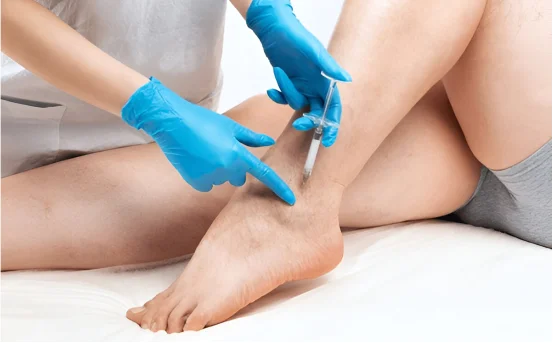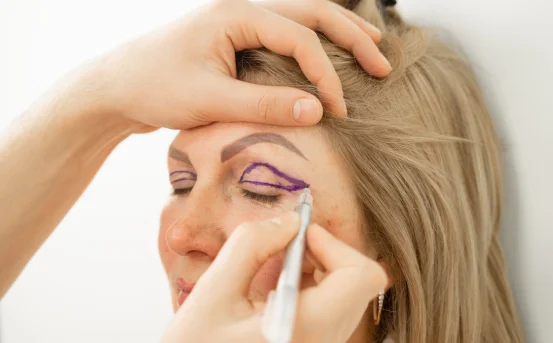Laser surgery has become an important tool for doctors across numerous specialties. By directing a concentrated beam of light onto tissue, the procedure can cut, reshape, or destroy cells with remarkable precision. Because the laser targets only a very thin layer of tissue, many patients experience less discomfort than they would after a conventional scalpel operation. The tiny wounds tend to seal themselves quickly, so recovery usually moves along at a brisk pace and noticeable bruising or swelling is often minimal.
Understanding the symptoms for laser surgery can help you decide if this approach is right for you.
Laser surgery has become a go-to technique for many procedures, whether a doctor is treating a stubborn skin lesion, correcting vision, or addressing a more complex problem inside an organ. Yet, knowing if a laser is the best tool for your condition can still feel unclear.
So, where are lasers commonly put to work?
Recognizing Symptoms for Laser Surgery
In eye clinics, for example, LASIK or its newer cousins reshape the cornea with a precision that glasses cannot match. Dermatologists use gentle beams to smooth old scars, erase tattoos, or remove moles with minimal scarring. Gynecologists may rely on focused light to treat endometriosis lesions that resist medication. In the urology suite, a burst of laser energy can fragment kidney stones so they pass harmlessly. Oncologists take advantage of heat from concentrated beams to shrink tumors that sit in hard-to-reach spots. Ear, nose, and throat specialists, too, have their share of laser techniques to clear vocal cord lesions or open obstructed nasal passages.
what sort of signs should prompt a chat with your doctor about laser options?
Take vision troubles first. If you struggle with constant blurriness, see halos during evening drives, or notice letters running together, it may be time to discuss LASIK, PRK, or other refractive surgeries. Those same symptoms can sometimes stem from cataracts, in which case a different kind of laser will be part of the cataract removal puzzle.
- Long-Term Skin Issues
Common Treatments: Laser resurfacing, acne scar revision, mole excision
Related Complaints:
- Old acne marks
- Fine wrinkles
- Patchy skin color
- Sun spots or age freckles
- Random hair or unwanted tattoos
A quick burst of laser light can smooth out scars, zap breakouts, and refresh tired, aging skin.
- Urgency, Pain, or Blood with Urine
Common Treatments: Laser stone fragmentation, prostate laser repair
Related Problems:
- Kidney stones
- Benign enlarged prostate
- Bladder growths
Searing pain, bright-red blood, or eight bathroom runs in an hour all point to urinary troubles where lasers shine.
- Heavy Periods or Ongoing Pelvic Aches
Common Treatments: Laser endometrial ablation, endometriosis excision
Related Symptoms:
- Clots and floods
- Steady lower belly pain
- Burning during sex
Laser options cut away trouble without the scars, letting you bounce back faster than a big belly incision.
- Stuffy Nose or Wheezy Breaths
Common Treatments: Laser turbinate shave, polyp excision
Related Conditions:
- Crooked septum
- Bulbous turbinates
- Sneaky nasal polyps
If you are perpetually blocked up or gasping for air, a brief laser pass through the nose may bring sweet relief.
If you notice unexpected bleeding or discover a new growth on your skin, laser treatment may be closer than you think. Surgeons now rely on quick, high-energy beams to both test and remove these troublesome spots. Whether it’s a suspicious mole, a bleeding ulcer in the stomach lining, or a lesion flagged during a routine check, an early catch can make all the difference. In most cases, a small section is biopsied or the entire mass is excised in a single visit, so there’s no need to schedule a second appointment.
Chronic aches are a different story, yet lasers here do just as much heavy lifting. People with nagging neck pain, stiff knees, or tingling hands that shoot from the spine often feel stuck. Laser spinal surgery, however, gently ushers bulging discs or tight ligaments aside while leaving the surrounding muscle tissue mostly untouched. Surgeons also apply low-level lasers to arthritic joints, easing inflammation after the fact. Results frequently include clearer motion, less radiating discomfort, and the chance to ditch the hospital gown by lunch hour.
So why are doctors reaching for a laser instead of an open scalpel? First, the beam hones in on cells like a spotlight, allowing precise cuts where guides like cameras or magnifiers might scatter light. That accuracy spares nerves and blood vessels, a huge advantage in procedures spanning delicate eyes to deep organs. Second, less slicing means tissue and stitches spend minimal energy healing, translating to flatter scars and gentler post-op discomfort. Finally, many laser treatments now fit neatly into an outpatient schedule, letting patients drive home, skipper their regular errands, and sleep in their own bed—all within a few hours of arriving.
- Lower Risk of Infection :- Because lasers seal tissue as they move, they cut down both bleeding and the chance for germs to sneak in and cause problems.
- Cosmetic and Aesthetic Benefits :- That same property makes laser tools a favorite in dermatology and cosmetic work. Patients get smoother, more polished results on their skin, face, and body than they often do with older techniques.
When Should You See a Doctor?
If you are bothered by repeat eye troubles, skin flare-ups, strange bleeding, or pain that won’t quit, it is smart to talk with a doctor. A careful look, possibly including images, lab tests, and a hands-on check, will show whether a laser procedure makes sense. Acting early can sometimes stop bigger issues down the road and really boost your day-to-day comfort.
Conclusion
Laser surgery is quietly changing modern medicine by giving us faster, gentler ways to treat a long list of ailments. Whether we are fixing vision or removing tumors, those bright beams are helping doctors do their jobs with new levels of control. If your symptoms are slowing you down, reach out to a provider. You might find that a laser option brings quick relief and lets you bounce back sooner than you expected.























